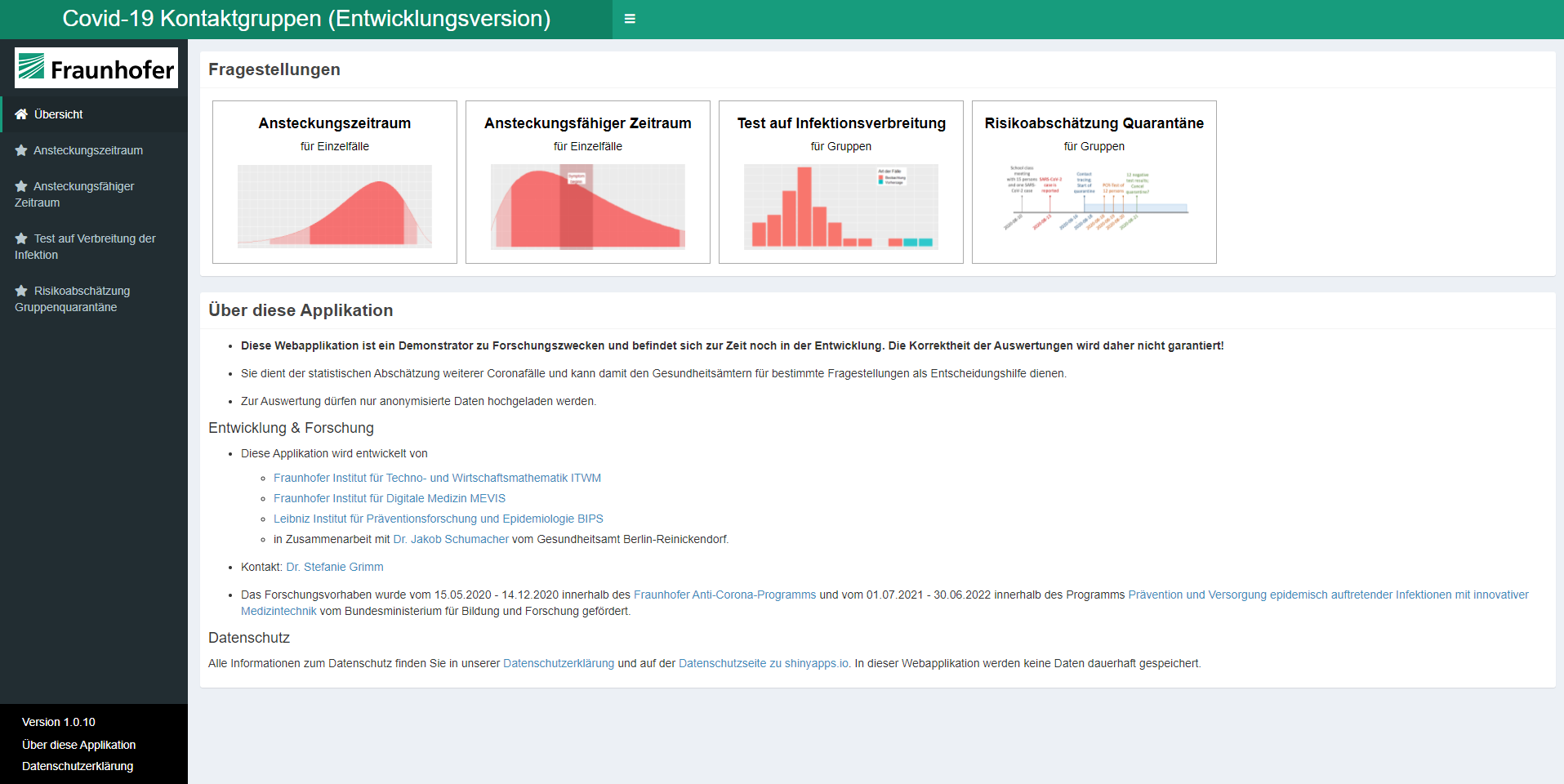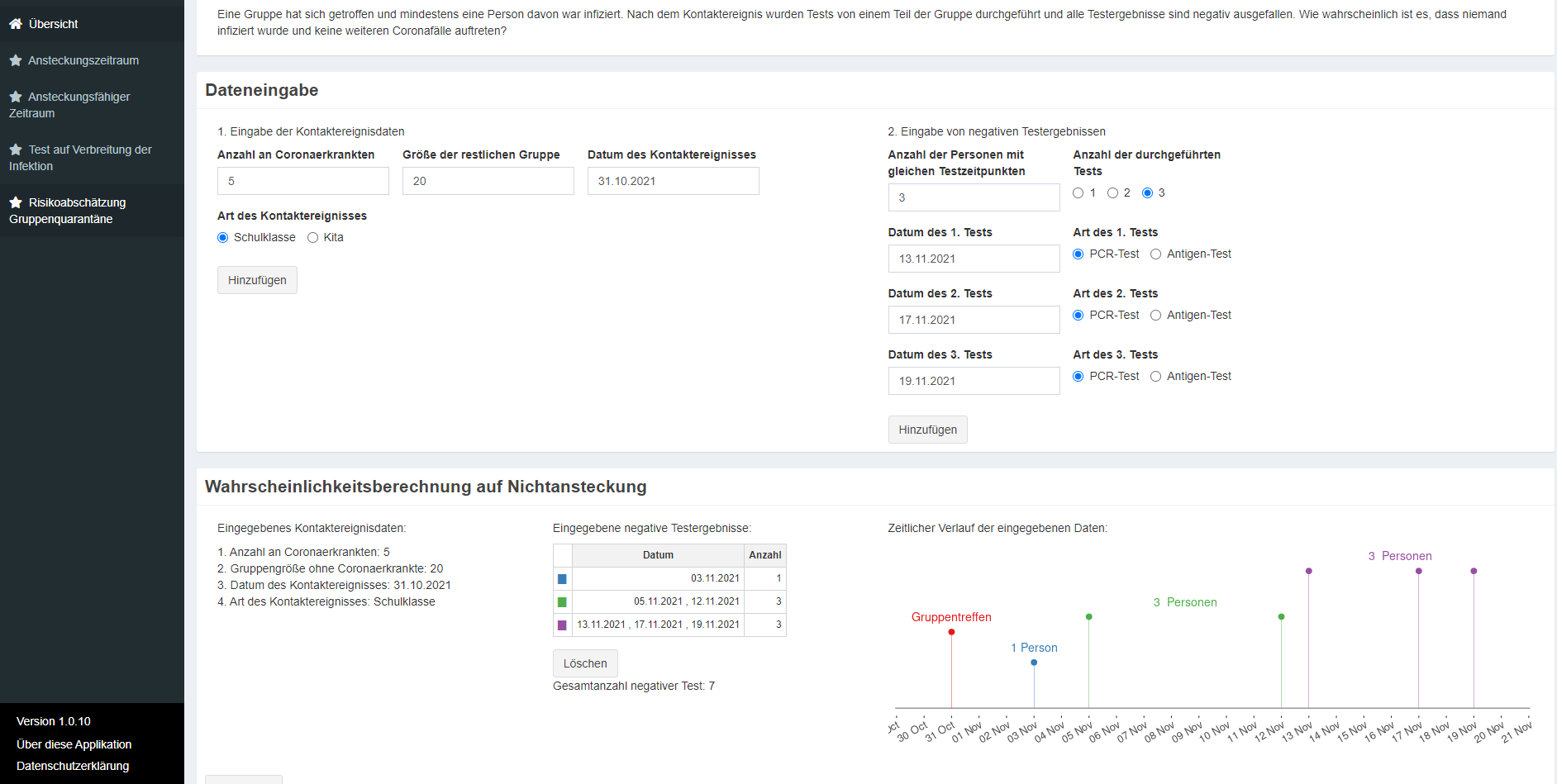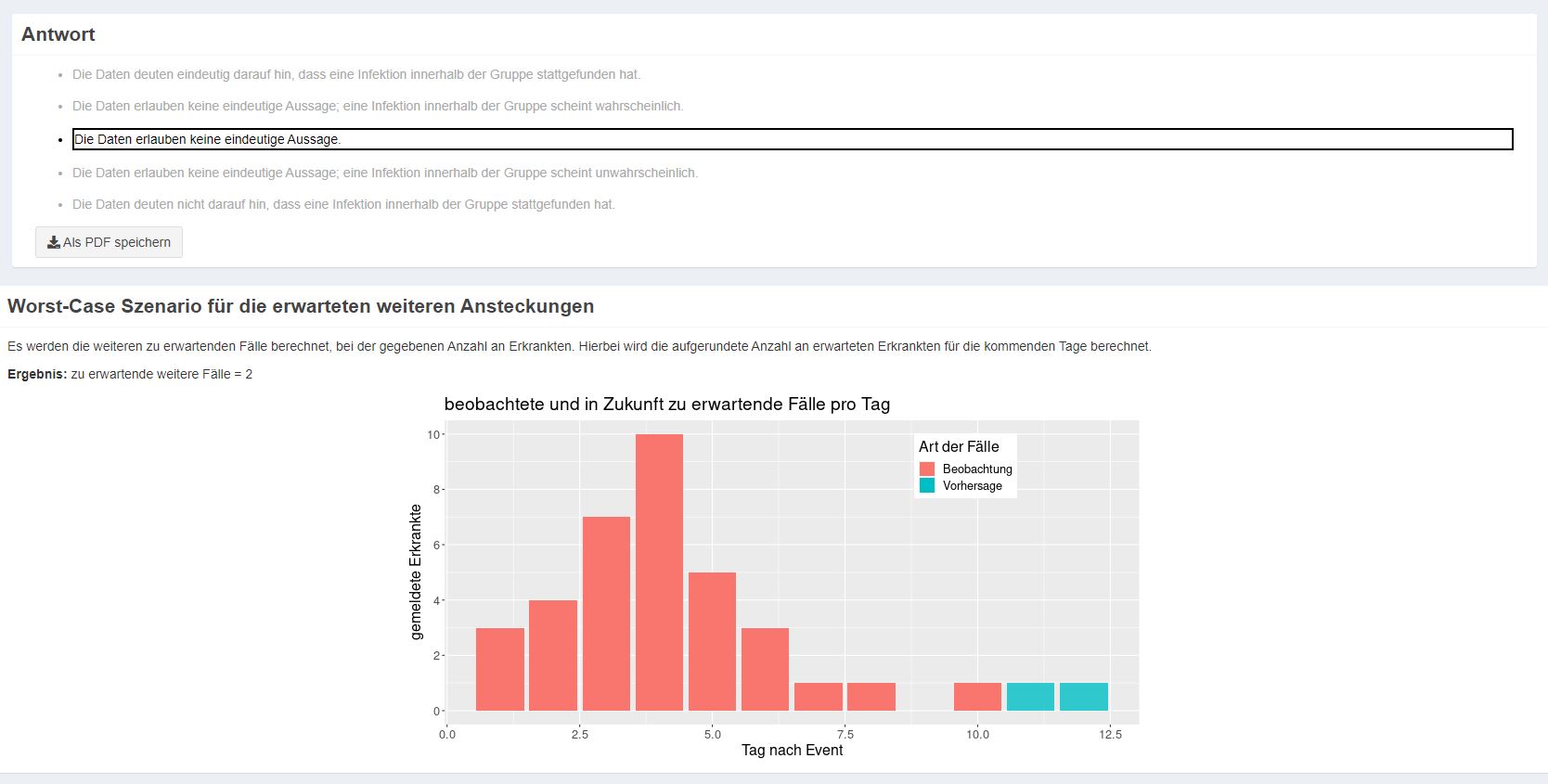Health departments continue to face significant challenges in containing the SARS-CoV-2 pandemic. Among other things, decisions on quarantine orders have to be made on a daily basis, not infrequently affecting entire school classes or other groups. Therefore, together with our partners in the EsteR – Decision Support for Public Health Departments project, we are looking at how we can support these decisions using statistical modeling. In collaboration with the associated health departments, we have identified various issues that are useful for their daily work. We provide statistical analyses to support these questions in the form of an app.
The project is funded for one year by the Federal Ministry of Education and Research (BMBF) within the framework of the announcement »Prevention and Care of Epidemically Occurring Infections with Innovative Medical Technology«. It is a follow-up project to CorASiv and we as Fraunhofer ITWM are project coordinator.



